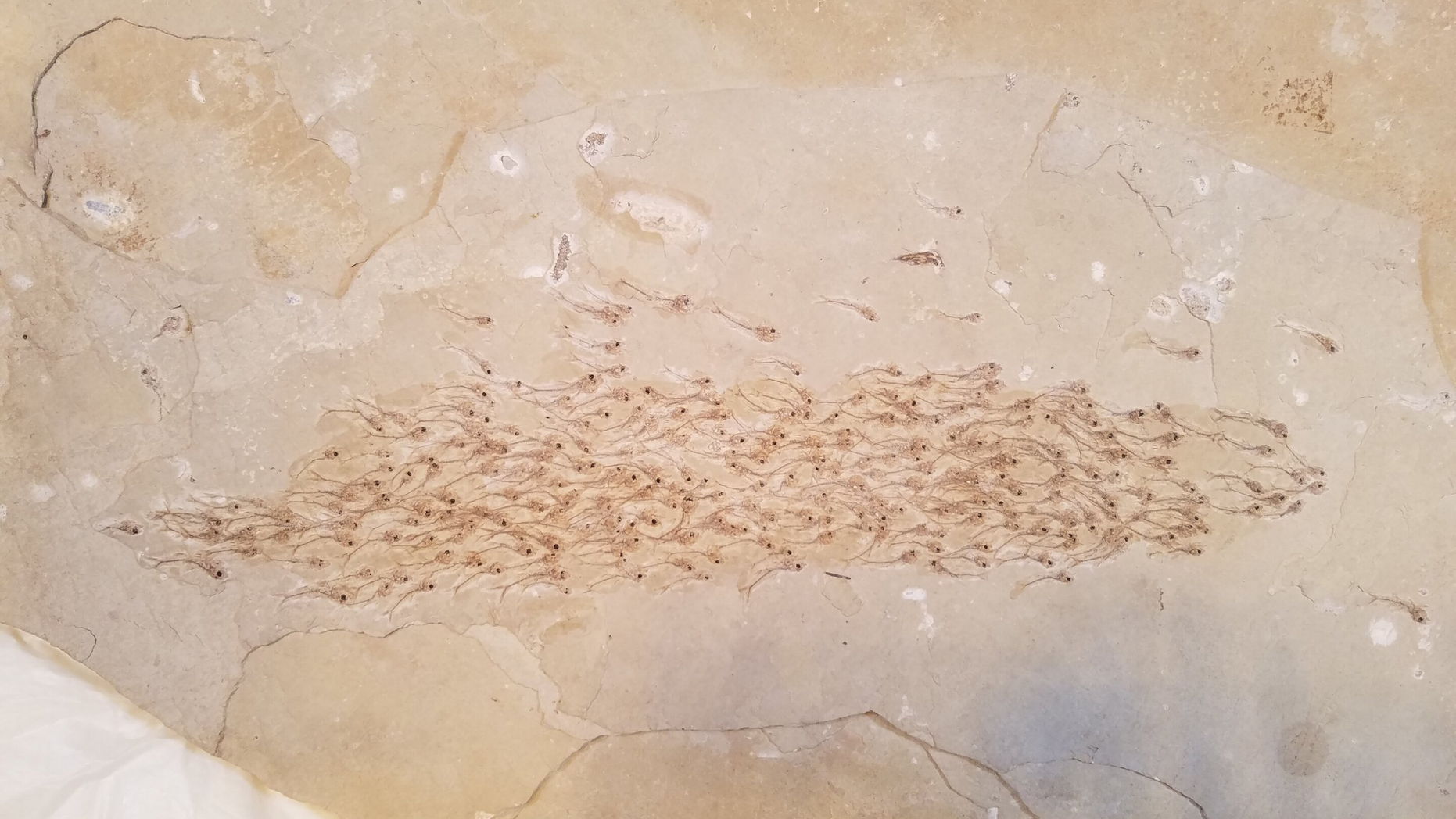
This 50-million-year-old fossil, hold by a museum in Japan, shows 259 fish swimming in a propagandize — one of a beginning famous examples of concurrent organisation function ever.
(Mizumoto et al./Proceedings of a Royal Society B)
One fish, dual fish, passed fish, cold fish.
There’s room for all forms in a newly described hoary that shows 259 baby fish swimming together in a school, approximately 50 million years ago. According to a authors of a new investigate published Wednesday (May 29) in a biography Proceedings of a Royal Society B, this ex-school might be a beginning famous hoary justification that antiquated fish swam in unison, usually as complicated fish do today.
A organisation of Arizona researchers stumbled on this conspicuous stone during a revisit to a Oishi Fossils Gallery of Mizuta Memorial Museum in Japan. Working with a museum, a researchers dynamic that a unlikely hoary substantially originated in America’s Green River Formation, a geologic tier in present-day Colorado, Wyoming and Utah that contains a trove of fossils dating to between 53 million and 48 million years ago.
The fish in doubt all belonged to a archaic class Erismatopterus levatus, and were apparently entombed together in a midst of a slight float that might have been cut brief by an underwater avalanche of sand, a researchers wrote. All though dual of a diminutive specimens were swimming in a same instruction and in a tighten formation.
More From LiveScience
To infer that a fish were indeed swimming in a propagandize and not usually fossilized that approach by coincidence, a researchers ran a array of simulations to imitate a group’s expected movements. The simulations showed that a fish were apparently not usually swimming in unison, though also did so according to a undying set of behavioral manners that still uncover adult today.
“We found traces of dual manners for amicable communication identical to those used by working fishes: abhorrence from tighten people and captivate towards neighbors during a distance,” a researchers wrote in their study. In other words, particular fish swam tighten together, though not so tighten that they crashed.
According to a authors, this ancient chunk of passed swimmers shows that fish (and presumably other animals) developed concurrent organisation behaviors during slightest 50 million years ago. This synchronized swimming seems to have successfully saved a fish from being devoured by a predator, even if it could not save them from apropos a museum exhibit.
- Gallery of Fantastic Fossils
- Image Gallery: Fossils Reveal Rhino’s Grisly Death
- Photos: The First Dino Fossil Found in Washington
Originally published on Live Science.











